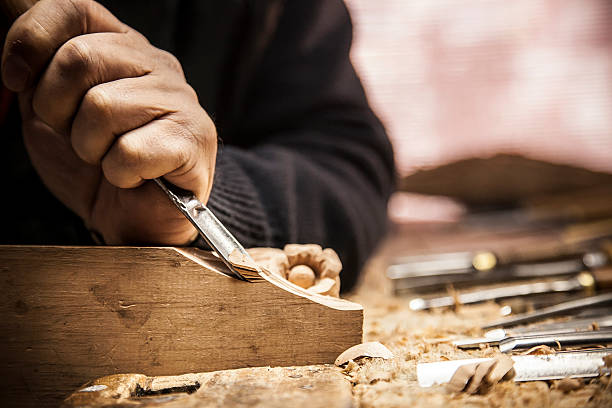A professional furniture maker views wood not as a raw material but as the backbone of every project. The grain, tone, and density determine how the piece will perform and how long it will last. When service providers say, We are providing furniture maker Pantego to guide clients toward the most reliable materials for their projects, it highlights the value of this expertise. Choosing the wrong wood could result in a table that warps or a chair that cracks, while the right choice ensures generations of use. From heritage pieces to modern furniture, careful selection is always the first step toward trust and satisfaction.
Purpose Shapes the Decision: Furniture Maker Pantego
Purpose drives the choice of wood. A bed frame must support weight while staying steady for years, while a cabinet prioritizes balance between aesthetics and storage. A thoughtful choice ensures durability in daily routines. Oak, for example, stands up to constant wear, while cedar resists insects, making it ideal for wardrobes. Each decision is practical, but it also reflects respect for the people who will use the furniture every day. By focusing on purpose, furniture feels right for both function and lifestyle.
Balancing Strength with Beauty
Strength secures stability, but beauty shapes emotional connection. A desk must handle pressure from books and laptops, but it should also inspire creativity through its grain and finish. Our furniture maker Pantego insights combine the toughness of hardwoods with elegant finishes to create pieces that feel dependable and attractive. Beauty lies in more than appearance; it lives in the feeling wood creates when touched or seen across a room. A strong table carved from maple carries quiet power, while walnut’s deep tones add comfort and warmth. Strength without beauty feels cold, while beauty without strength feels temporary. Together, they create timeless value.
How a Woodworker Views Texture and Grain
Every experienced woodworker respects the grain. Straight grains work for minimalist designs where clarity matters, while intricate patterns shine in traditional furniture that highlights natural artistry. Texture plays its role too, influencing both look and feel. Our woodworker Pantego, has the knowledge to interpret texture so every surface feels inviting and authentic. Grain is more than decoration—it tells the tree’s story, showing years of growth through natural lines. Customers see individuality in these marks, giving every piece character. Texture also changes finishes: open pores absorb stain differently from smooth grains, producing unique results. These details make each piece of furniture not just useful, but alive.
Considering the Atmosphere of the Space
Furniture interacts with the room around it. A light birch coffee table lifts the mood of a living room, while dark walnut adds grounding in a dining space. Makers carefully plan so the furniture enhances the space rather than clashes with it. Tone matters: pale woods create openness, dark ones add intimacy, and medium hues strike a balance.
Table: Wood Choices for Different Spaces
| Space Type | Best Wood Options | Key Benefits |
|---|---|---|
| Dining Room | Oak, Maple, Walnut | Strength and elegance |
| Living Room | Cherry, Mahogany | Warm tones and an inviting atmosphere |
| Office | Birch, Ash, Beech | Light, modern, and clean appearance |
| Bedroom | Pine, Cedar | Relaxed feel and soft texture |
These intentional choices ensure that every environment feels complete, with furniture that fits naturally into the space’s life.
Climate and Longevity
Climate influences wood stability more than many realize. Humidity expands wood fibers, while dryness shrinks them, creating cracks or warps. Our woodworker Pantego has the skills to select species that withstand climate shifts and extend the life of every piece. For example, teak resists moisture, making it popular in humid regions, while maple holds steady in dry climates. Without attention to climate, furniture risks losing both appearance and strength. Makers protect investments by pairing the right species with local conditions, ensuring long-term stability. Customers benefit by receiving furniture that holds shape, beauty, and function through changing seasons year after year.
Responsible Sources and Sustainability
Responsible sourcing matters because wood is not infinite. Makers who choose certified or reclaimed wood protect forests while providing customers with meaningful stories behind their furniture. Reclaimed wood, with its aged textures, tells a history that new lumber cannot. Certified lumber reassures clients that forests will continue to grow for future generations. Choosing sustainable sources is not only ethical but also strategic—it meets rising customer demand for eco-conscious products. Furniture with such origins becomes more than functional; it becomes a statement of values.
Budget Without Losing Quality
Budget always matters, but quality should not suffer. By combining hardwoods for visible surfaces and softwoods for hidden frames, makers keep projects cost-effective. People who are searching for custom furniture engraving near me only work with those who provide the unique touches that stay affordable yet durable. Locally available wood reduces transport costs while maintaining quality. Finishing techniques allow less expensive woods to mirror premium species, giving customers the look they desire at a fraction of the price. Balancing budget and performance ensures clients never feel they must choose between cost and reliability. Instead, they enjoy furniture that is affordable, attractive, and strong.
The Emotional Connection
Wood carries emotion in its tone, weight, and presence. Walnut feels grounded, pine feels airy, and mahogany feels timeless. Furniture chosen with emotion in mind builds a connection that lasts for years. Our furniture maker Pantego recommends that we consider not only the strength but also the emotional value wood conveys in everyday life.” A table becomes more than a place to eat; it becomes a stage for family moments. A chair becomes more than seating; it becomes a companion through conversations and work. This connection makes furniture irreplaceable, transforming it from an object into a part of life’s memories.
Conclusion
Choosing wood is not about selecting material—it’s about building trust, durability, and emotional connection. From purpose and strength to climate and sustainability, every factor has played a role in ensuring furniture has served people well for years. For those seeking professionals who value quality and responsibility, Bulldog Custom Woodworking stands ready to provide guidance that respects both customers and the environment.

















Leave a comment